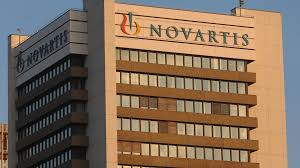Why Novartis Is Paying $8.7 Billion for a Gene Therapy Developer You’ve Never Heard Of

On Monday, Novartis CEO Vasant Narasimhan announced the company would buy the Illinois-based gene-therapy developer AveXis for $ 8.7 billion.
The acquisition comes only a few months into Narasimhan’s tenure as CEO. AveXis’s main drug treats spinal muscular atrophy (SMA), a degenerative genetic condition that affects muscle function. The offer from Novartis (nvs) would give AveXis (avxs) shareholders 88% more per share than where the stock closed on Friday. But Narasimhan estimated the patient population of SMA at only 23,500 in Novartis’s established markets. So why is Novartis investing so much in this deal?
Focus on focused medicines
In March, Narasimhan laid out his strategy as CEO in Fortune. He emphasized the need to develop new drugs using a precision medicine approach, which uses genetic information to target medicines and learn more about diseases. AveXis may be known for its SMA treatment, but its capabilities in gene therapy will help Novartis bolster its neuroscience offerings.
Investment in gene therapies
This is not the first time Novartis has invested in gene therapies to cure rare diseases. Earlier this year, the company made a $ 170 million deal with Spark for rights to use its blindness treatment, Luxturna, outside the U.S. In 2017, Novartis was part of wave of new gene therapies as the FDA approved a cancer treatment they developed that re-engineers immune cells.
Keeping up with the Joneses
Novartis isn’t the only pharmaceutical company that’s investing in gene therapies. Earlier this year the French company Sanofi bought the American drug maker Bioverativ in large part because of its potential to develop gene therapies and the wave of FDA approvals in 2017 shows the healthcare market is moving this direction—and fast. Novartis may have been earlier to the market than others, but that doesn’t mean they have room for slack.
Spare cash
Last month, Novartis cashed out of a consumer health joint venture with GlaxoSmithKline (gsk), reaching a $ 13 billion deal for GSK to take control. That deal gave Novartis the money for this and other “bolt on” deals, as Narasimhan calls them, that will help the company bring its focus back to drugs. At the time the buy-out deal was announced, Narasimhan called the joint venture a “non-core asset.”
Profit motive
While gene therapies are groundbreaking, they’re also incredibly expensive to the consumer, with anticipated list prices in the hundreds of thousands of dollars — or even a million in some cases. The price tag could be one reason why Narasimhan doesn’t see much of a drawback in shelling out for a drug that he can only sell to a couple thousand people.
Novartis was not immediately available for further comment.
